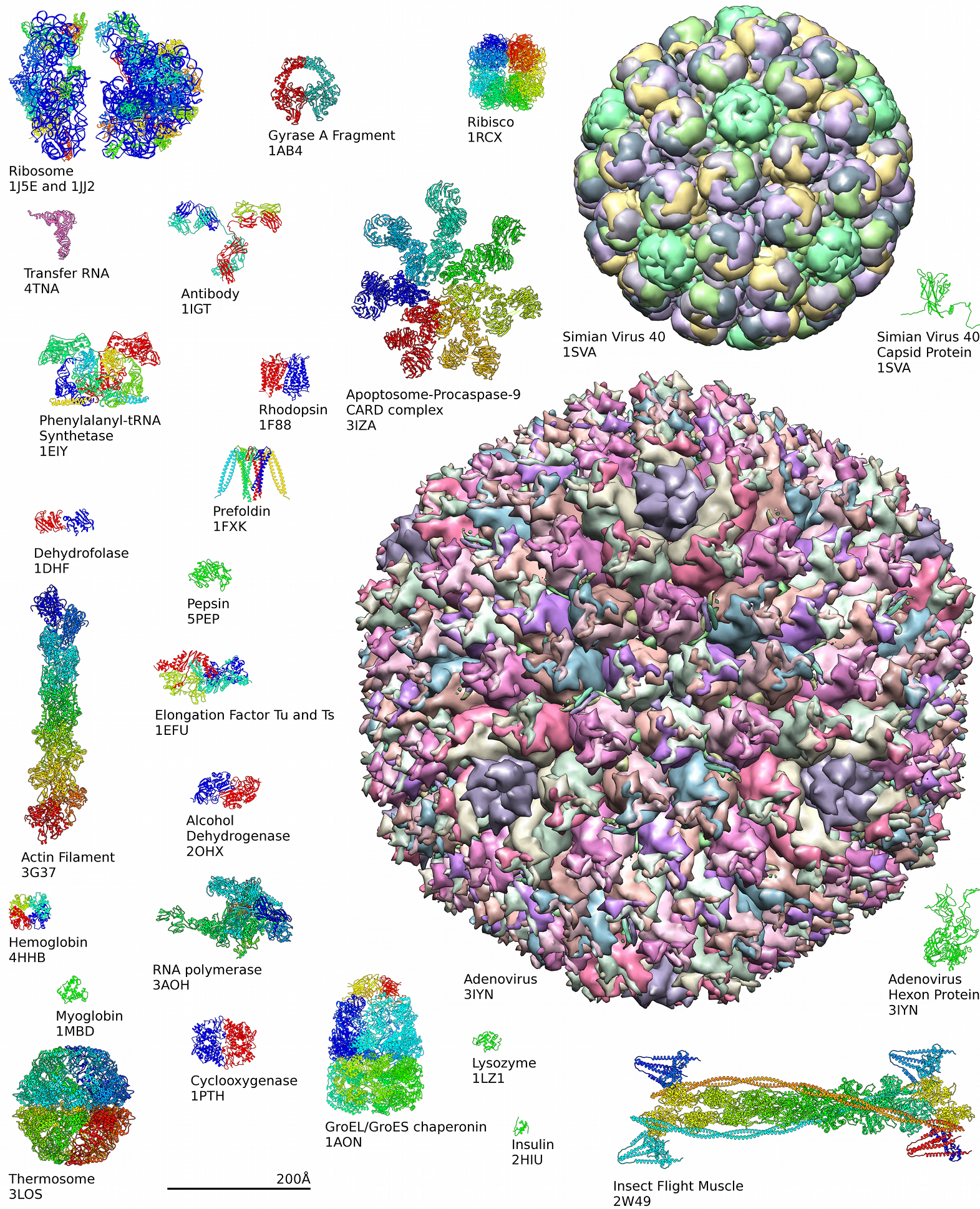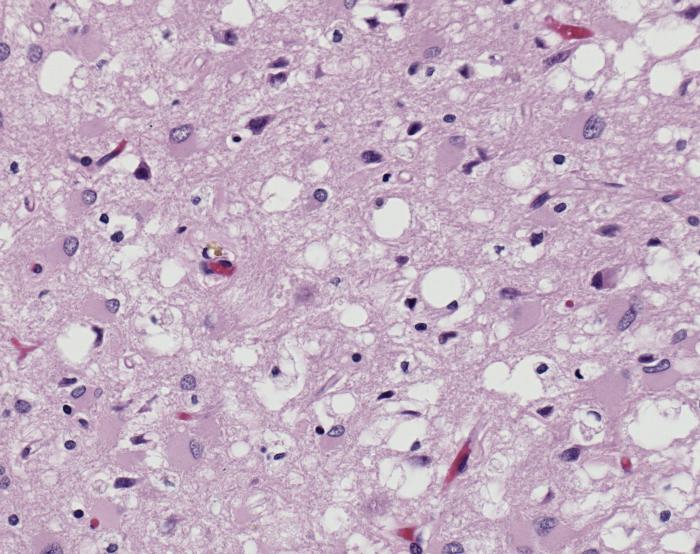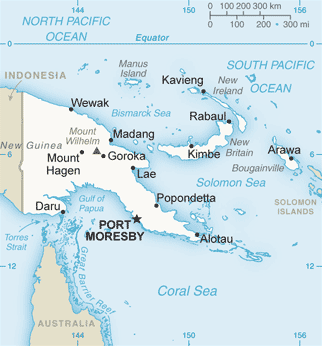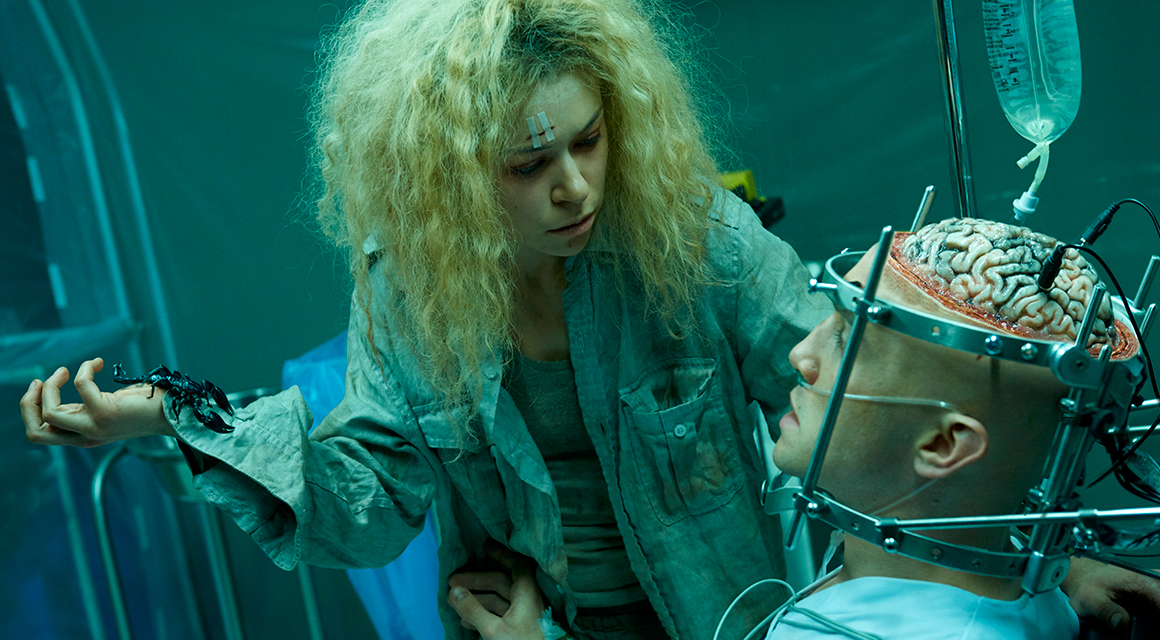In the penultimate episode of season 3, we learned a key piece of information about the Orphan Black clones—the origins of the Castor and Leda Projects lie within a single solitary individual person, Kendall Malone (Alison Steadman). This mysterious woman with a murky legal record is not only a genetic chimera and hence able to be both the Castor and Leda original, but also the biological mother of Siobhan Sadler (Maria Doyle Kennedy), Sarah Manning (Tatiana Maslany) adopted mother! (By the way, this first incredible plot twist is based on a surprisingly common condition, vanishing twin syndrome, which may occur in as many as one out of eight pregnancies that begin with multiple embryos. Typically, one twin is inviable and totally replaced by the other, but occasionally the two embryos merge together to become one fetus. As one might expect, this phenomenon is particularly common following in vitro fertilization, which often produces multiple births. In other words, Sarah’s adopted mother is her biological daughter. I could literally write a book on how insane that is.
So for the time being (if only for the sake of our collective sanity), let’s instead focus on Siobhan’s biological uncles, the Castor clones (this, of course, presumes that the egg that produced Mrs. S came from the cell line that was used for Project Leda, rather than that which was used for Project Castor, which is likely because Y chromosomes from the Castor cell like would interfere with female reproductive function). Besides, we have plenty of crazy mysteries to unravel regarding project Castor (and my brain is royally scrambled by the Orphan Black family tree, in which Mrs. S. would be Kira’s (Skyler Wexler) adopted grandmother and biological niece, okay I’m done talking about that now—back to the Castor clones).
What is going on with the Castor clones?
Is the neurodegenerative disorder of the Castor clones like any real-world medical conditions? Would stem treatments like those received by Cosima be of any help to them? And how is it possible that the Castor clone genetic disorder is sexually transmitted? (Alright, in light of that last question, maybe the clone genealogy might be less outrageous. Maybe.)
But to understand the Castor illness, we need to talk about protein folding.

Wait, proteins fold?
Yes, proteins fold! Let me explain. Way back in the first article in this series, I very briefly reviewed how proteins are chains of dozens or hundreds of smaller molecules called amino acids. The specific sequence of amino acids in a protein is determined by the sequence of nucleotides in an mRNA strand, which is determined by DNA in your genome. (Give yourself a bonus point if you remembered that this is called the Central Dogma of Molecular Biology.) But that’s not where the story ends. Proteins also fold into secondary and tertiary structures, which makes them the right shapes to perform their functions. The properties of the individual amino acids as well as the biological context inside organisms determine precisely how these proteins fold. Generally, mutations are the cause of proteins folding incorrectly, but factors like pH, temperature, and dissolved compounds can also disrupt folding. Poorly folded proteins are a key part of disorders like Alzheimer’s and Huntington’s diseases, as well as whatever it is that afflicts the Castor clones.
A mysterious debilitating illness
Throughout the third season of Orphan Black, we’ve come to see most of the Project Castor clones succumb to some pretty terrifying psychological breakdowns. First, it was Seth (Ari Millen). Then, it was Rudy (Ari Millen). And who knows which carbon copy is going to lose his marbles next? (Probably Mark Rollins (also Ari Millen) as he’s the last Castor clone with whom we’re already familiar.) First, they “glitch.” Then, they begin to hallucinate. And shortly thereafter, basic life functions become totally compromised. This progression sounds an awful lot like that caused by Creutzfeldt–Jakob disease, a disease of which Scott Smith (Josh Vokey) was reminded by a pathological analysis of Seth’s brain in episode 3 of season three (Formalized, Complex, and Costly).

Creutzfeldt–Jakob disease is a terrifying, typically genetic disease that causes a rapid deterioration of mental capacities once onset begins. Disease onset is typically triggered by a mutation in the PRNP gene, which stands for “prion protein,” a key protein in neural tissue whose improper folding has dire consequences. Typically, when a mutation in the PRNP gene contained by a single cell makes the prion protein fold incorrectly, a very strange thing happens—the preexisting healthy prion proteins, coded for by mutation-free PRNP genes, begin to fold into that defective shape. And then these previously properly folded proteins coerce other proteins into folding the wrong way. Once this cascade begins, a dramatic and uncontrollable chain reaction ultimately leads to a lethal impairment of neurological function—a lot like what we observed with Seth.
You may have noticed that I used the word typically quite a bit when describing Creutzfeldt–Jakob disease, and that’s because there is a related condition called variant Creutzfeldt–Jakob diease, which is virtually indistinguishable, but totally non-genetic. Variant Creutzfeldt–Jakob disease has been referred to as “human mad cow disease” and for good reason. When a misfolded prion protein is introduced into the brain tissue of a healthy individual, perhaps by eating a cheeseburger from a “mad cow,” unaffected proteins begin to misfold just as though a mutation had arisen. This chain reaction is just as deadly. Victims are left with a brain full of “spongy” regions (hence the alternative name spongiform encephalopathy) owing to these tiny structural errors, and you don’t need me to tell you that that is a bad thing. (By the way, the infectious spread of bad folding among prions is a type of epigenetic inheritance, a topic covered in more depth in a previous article.)

The brain games that Dr. Virginia Coady (Kyra Harper) and her minions have developed (the tricky logic puzzles and possible Zen koans) seem to reveal just the sorts of mild neurological impairments that initially accompany Creutzfeldt–Jakob disease as well as Kuru and Gerstmann–Sträussler–Scheinker syndrome, two diseases that also spread via this infectious prion misfolding mechanism. Moreover, all three of these disorders are caused by poorly folded products of the same PRNP gene, one hundred percent fatal, and transmissible. Open and shut case, right? Just like Scott found, the Castor clones have a prion disease, and as Delphine (Evelyn Brochu) noticed, out of their kindness of their hearts, they are sharing their horrific problem with their sexual partners.
But can prions cause a sexually transmitted disease?
At first glance, it seems that an infectiously misfolding prion is a fantastic mechanism for the spread of the Castor disease to the women with whom they sleep. After all, the now infamous mad cow disease and Kuru are spread by direct contact with infected individuals. When cows or humans eat misfolded prions from infected individuals, they can be infected by the misfolded prion if one single protein makes it to neural tissue. Variant Creutzfeldt–Jakob disease has been predominantly caused by transplants or blood transfusions from infected individuals, but it has also been caused by consumption of prions from cows infected with mad cow disease. Similarly, Kuru has been caused by funerary cannibalism among the Fore people of Papua New Guinea. Though it may seem like a morbid way of saying goodbye to your loved ones, to at least one tribe, cannibalistic feasts were a cultural tradition until Kuru sprung up in the mid-1950s. (By the way, Kuru is derived from the Fore word meaning “shake,” which aptly describes the near terminal stage of Seth’s decline.)

Because of this potential for infection, individuals with risk factors for prion diseases are forbidden from donating blood or organs in the United States, Canada, Australia, Switzerland, Denmark, Poland, and Singapore, among other countries. What is the supposedly biggest risk factor for prion diseases? Having spent more than 3 months in the UK between 1980 and 1996—the apparent peak of mad cow disease infections via diet (I say apparent, because like in most epidemiological cases, we have no idea when infection began). Policies like this have been most extensive in the United States, where even the import of human sperm has been forbidden since 2005. This was motivated by a minute, though theoretically non-zero, risk of prion transmission via the white blood cells in ejaculate that are removed from semen samples prior to artificial insemination. While no one has ever observed sexual transmission (or artificial insemination transmission) of prion diseases, and it is thought to be highly unlikely, the possibility exists—I guess, maybe, but probably not. However, in the Orphan Black universe, this seems to be happening, as Delphine found a match between prions in Seth’s infected brain and the blood of Gracie Rollins (née Johanssen; portrayed by Zoé De Grand Maison). Hence, Gracie’s miscarriage was explained as a failure of her reproductive tract owing to the baffling Castor prion.
And this is where the Castor STD breaks apart—its effect on women. Prion proteins occur throughout the body in various tissues, but the only tissue in which the chain-reaction misfolding occurs is within the nervous system. While the female reproductive tract would certainly be exposed to Castor semen through intercourse, the prions could not have an effect on the fertility of Gracie and the women intentionally infected by Castor clones like Seth and Rudy. Prion proteins occur in brains, not Fallopian tubes, uteruses, and ovaries, so those Castor prion proteins must have been dramatically engineered to produce this effect.
[Warning, from here on out, I am wildly speculating. Please bear in mind the assumptions I’m making involve some totally unsubstantiated mechanisms.]
Can the Castor “STD” and Project Leda reproductive woes be related?
I am pretty darn sure that we will soon find some clarity on the relationship between the Castor prions and the Leda sickness, as the Orphan Black writing staff is exceptionally good about tidying up storylines. In the meantime, let’s speculate a bit. In 2015, you can do an awful lot of genetic engineering on living organisms. Though the early 1980’s certainly did not have the same technologies, let us assume that they did. Any group as unscrupulous as Topside and Dyad would not have a problem using genome editing tools like CRISPR to insert recombinant proteins into the Castor and Leda cell lines. Clearly, Castor was given a defective PRNP gene that somehow sterilizes women, but how it does this is still unclear.
If, at least in the Orphan Black universe, the prions can cause infertility, it is possible that some recombinant variant of the PRNP gene is coded for by both of the sibling genomes. By recombinant gene, I mean one that was assembled in pieces, rather than naturally occurring in some organism. Using recombinant genetic tools (as discussed in the first article in this series), you can actually make genes that do all sorts of exciting and terrifying things. It is possible that Project Leda engineered a prion protein that folds poorly in men’s brains, while it localizes to women’s reproductive tracts and causes its protein folding mischief there. Perhaps the Castor PRNP gene has been given a binding domain that makes it hone in on the female reproductive track. [boy oh boy, I’m getting a little out of my depths here!]
Alternatively, Topside, Dyad, and the rest of the diabolical cabal may just be hell-bent on controlling the reproductive fate of humanity, and the combination of a female clone that can’t reproduce and a male clone that leaves women barren is a great way to control reproduction. In other words, maybe the connection between the Castor “STD” and the Leda disorder is not based on biology, but on a based broader, shared, insidious goal. In this case, perhaps the Castor PRNP gene has been edited to include a domain that interacts with BRCA1 or BRCA2, genes that infamously cause ovarian cancer when they are defective. [this too sounds a little bonkers]
What is a clone to do?
Even though in the last article, we decided that the Leda afflictions are unlikely to be cured through current stem cell techniques, perhaps there is hope for Castor? Again, ultimately, cures or treatments such as stem-cell therapy are years off, but they theoretically (notice that I’ve had to use that word a lot in this article) offer the potential to replace any damaged tissue (please see the previous article in this series for more info). But, as mentioned in the last article, stem cell therapy does not provide a means for removing tissue that continues to damage an organism. For example, leukemia isn’t treated by bone marrow transplants (a type of stem cell treatment); rather, bone marrow transplants replace the cancerous cells that were eradicated by chemotherapy and/or radiation.
If all the misfolded prions in Mark or Rudy were removed, one individual single solitary poorly behaved prion is enough to start the cascade of improper folds all over again. This means stem cell therapy probably can’t help the Castor boys. If a prion is to blame for the Leda illness, which has not yet been suggested by the show, then they are in even deeper trouble than we thought. The stem cells, whether derived from the baby teeth of Kira Manning or the embryos made from Helena’s harvested eggs, could only theoretically help our clones if they had every single one of those pesky prions removed from their body, and every single copy of their genomes were replaced with a mutation-free PRNP gene.
For the sake of the righteous women of Project Leda, let’s hope that the prion troubles are restricted to the largely loathsome men of Project Castor.




